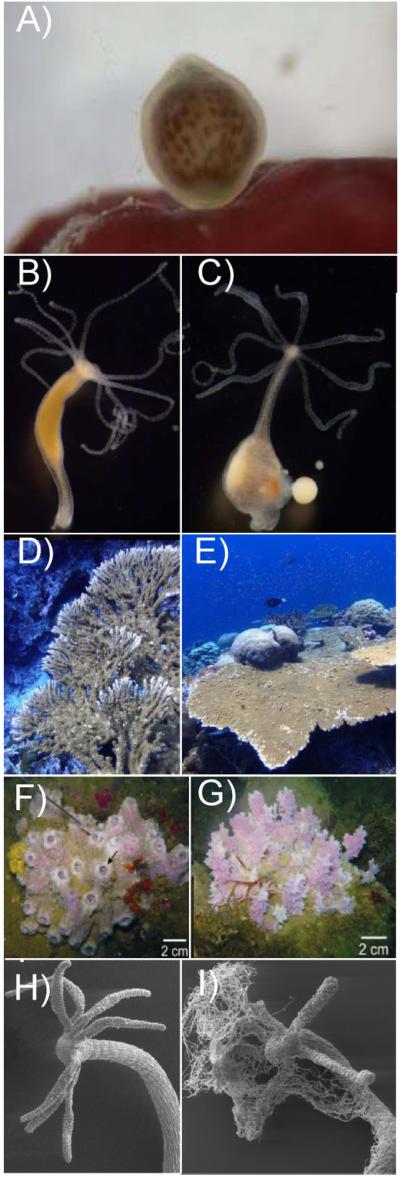Figure 3.
A: A single larva of Stylophora pistillata, about 5 h after release, right at the moment it first contacts a possible settlement surface. Larvae from Stylophora pistillata are typically pear-shaped and have a mean length of 1 mm (photo credit: Peter J Edmunds; http://www.eoearth.org/view/article/150659/). B: Pelmatohydra oligactis polyp. Polyps are up to 10 mm long. C: Female Pelmatohydra oligactis carrying several eggs. Gametogenesis is triggered by a temperature shift. D and E: Acropora clathrata at 5 m in a sheltered location (D), at 20 m in a high current location (E). Reproduced with permission from Zoe Richards. F and G: Typical morphotypes of Dysidea avara sponges from depth sites of 8.8 m (F) and 14.3 m (G); pictures from Mendola et al. [58]. H: Hydra vulgaris under normal culture conditions. I: Hydra vulgaris cultured in the absence of bacteria and infected by fungi.

